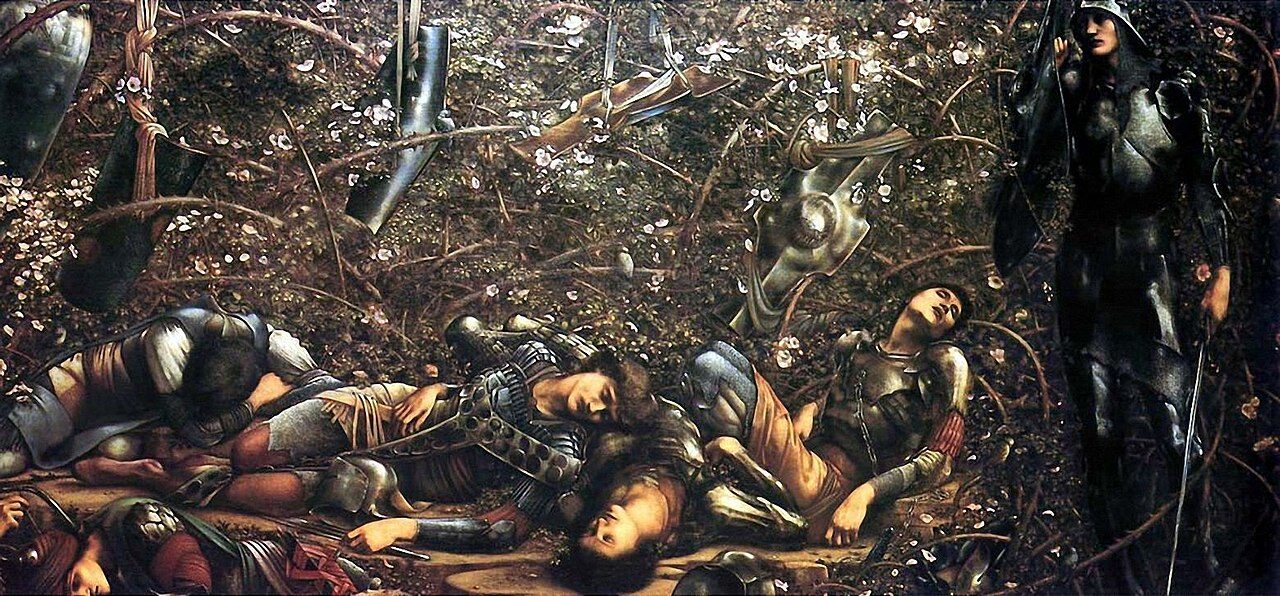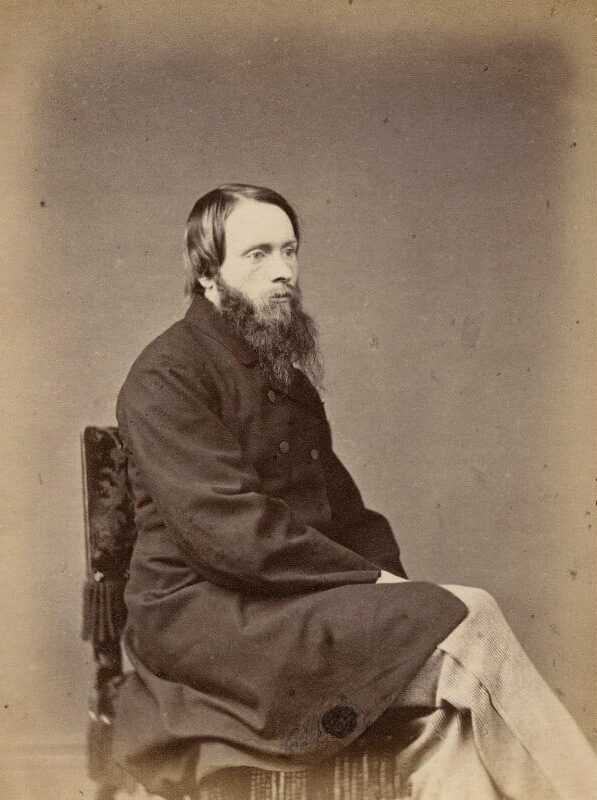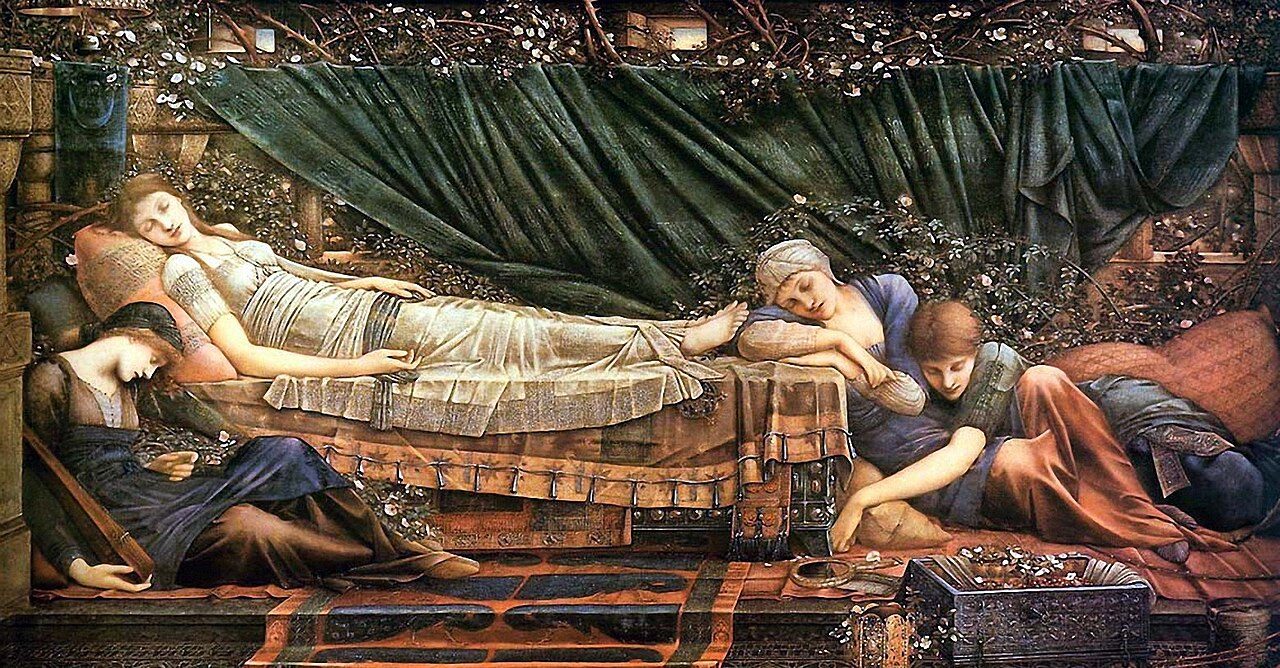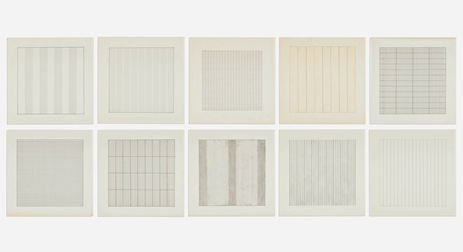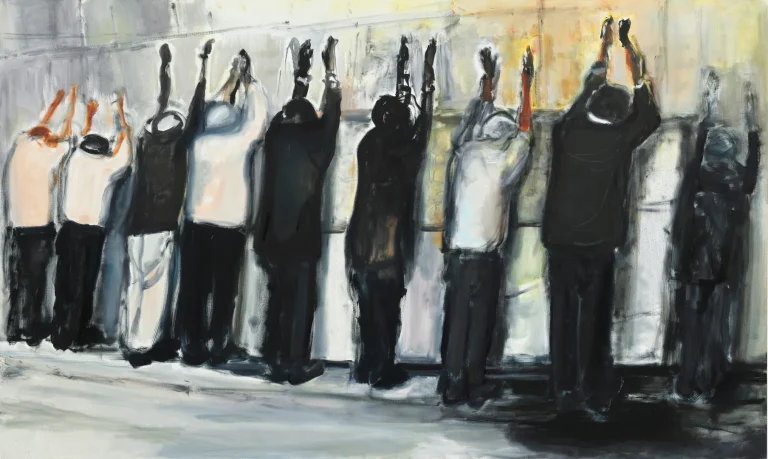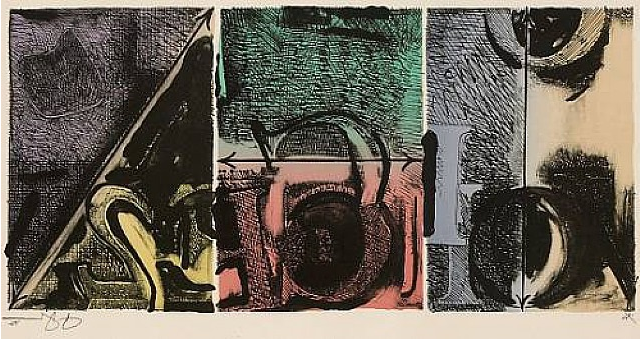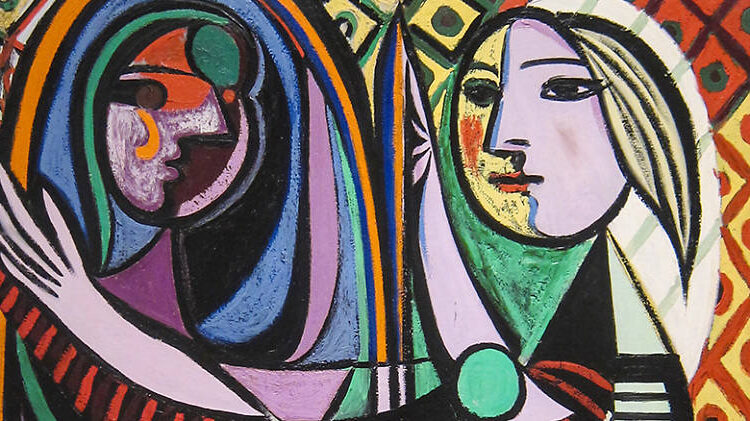Edward Burne-Jones: Painter of Pre-Raphaelite Masterpieces
Born: 28 August 1833, Birmingham, England
Death: 17 June 1898, London, England
Art Movement: Pre-Raphaelite, Aesthetic Movement, Arts and Crafts
Nationality: British
Influenced By: Dante Gabriel Rossetti
Institution: Birmingham School of Art
Edward Burne-Jones: Painter of Pre-Raphaelite Masterpieces
Life and Career of Sir Edward Coley Burne-Jones
Sir Edward Coley Burne-Jones (1833-1898) emerged as one of Britain’s most influential Victorian artists. He was known for his romantic paintings and significant contributions to decorative arts. His artistic journey spanned from humble beginnings in Birmingham to becoming a baronet and a central figure in British aesthetic culture.
Early Life and Education
Edward Burne-Jones was born on August 28, 1833, in Birmingham, England, to a frame-maker father. He experienced early tragedy when his mother died shortly after his birth, leaving him to be raised by his father and a housekeeper.
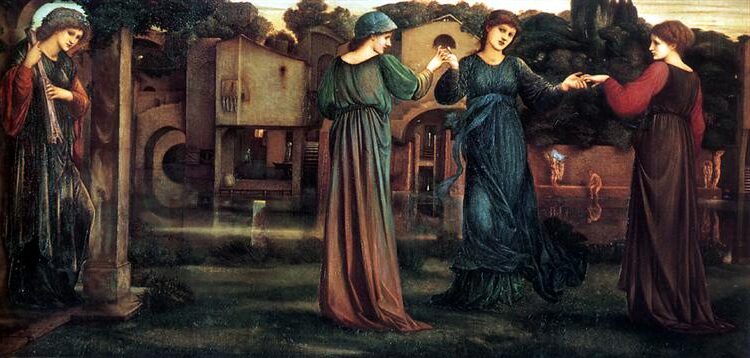
The Mill by Edward Burne-Jones, 1882
As a child, Burne-Jones showed artistic talent but initially pursued a different path. He attended King Edward’s School in Birmingham, where he received a classical education that would later influence his artistic themes.
In 1852, Burne-Jones entered Exeter College, Oxford, intending to study theology. At Oxford, he formed a crucial friendship with William Morris, who shared his growing interest in art. Together they discovered medieval art and literature, which would shape their artistic visions.
The young Burne-Jones became increasingly disenchanted with theology and drawn to artistic expression. In 1856, a meeting with Dante Gabriel Rossetti convinced him to abandon his clerical studies and pursue art instead.
Collaboration with William Morris
Burne-Jones and William Morris established a creative partnership that would transform British decorative arts. Their friendship, begun at Oxford, evolved into a lifelong professional collaboration.
In 1861, they founded Morris, Marshall, Faulkner & Co. (later Morris & Co.), a decorative arts firm that championed handcrafted items over industrial production. Burne-Jones designed stained glass windows, tapestries, and illustrations for the company.
His work with Morris reflected their shared medieval aesthetic and commitment to beauty in everyday objects. Burne-Jones created over 150 stained glass designs for churches throughout Britain, reviving this traditional art form.
The partnership embodied the principles of the Arts and Crafts Movement, emphasizing craftsmanship and artistic integrity. Their collaborative work on the Kelmscott Press editions of Chaucer and Tennyson showcased Burne-Jones’s skills as an illustrator alongside Morris’s typography.
Influence of Dante Gabriel Rossetti
Meeting Rossetti in 1856 marked a turning point in Burne-Jones’s career. Rossetti, already established in the art world, became his mentor and influenced his early artistic style.
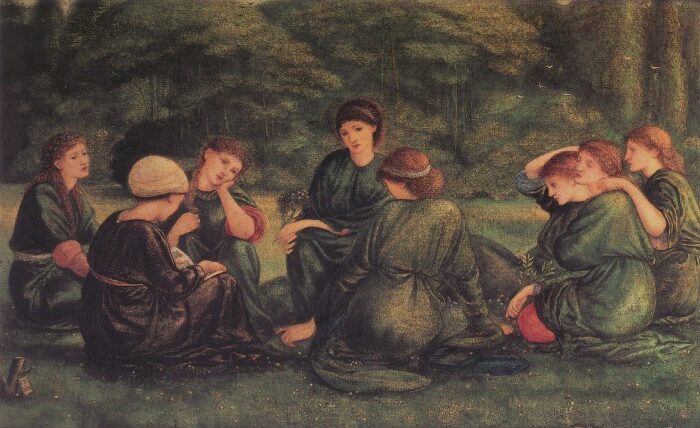
Green Summer by Edward Burne-Jones, 1868
Under Rossetti’s guidance, Burne-Jones developed his distinctive approach to figure painting. He adopted Rossetti’s rich color palette and medieval-inspired themes but gradually developed his own dreamlike style.
Their relationship shifted from teacher-student to colleagues as Burne-Jones’s talent matured. While Rossetti’s influence remained visible in Burne-Jones’s work, the younger artist eventually developed more elongated figures and complex compositions.
Burne-Jones’s paintings began to show greater technical sophistication than his mentor’s work, particularly in his detailed backgrounds and storytelling approach. His admiration for Rossetti’s romantic themes remained even as he surpassed him in certain technical aspects.
Association with the Pre-Raphaelite Brotherhood
Though not an original member of the Pre-Raphaelite Brotherhood (founded in 1848), Burne-Jones became associated with their second wave in the 1860s. His work embodied many Pre-Raphaelite ideals including medieval revivalism and attention to detail.
Burne-Jones’s paintings featured the characteristic Pre-Raphaelite elements: vibrant colors, complex compositions, and literary or mythological subjects. His works like “The Golden Stairs” (1880) and “King Cophetua and the Beggar Maid” (1884) exemplify these qualities.
Unlike some Pre-Raphaelites, Burne-Jones maintained consistent artistic principles throughout his career. He remained dedicated to beauty and craftsmanship even as artistic fashions changed around him.
His reputation grew steadily, and by the 1870s, he had established himself as a leading figure in British art. He was awarded a baronetcy in 1894, becoming Sir Edward Burne-Jones, a rare honor for an artist.
Pre-Raphaelite Movement and Aestheticism
Burne-Jones helped transition Pre-Raphaelite ideals into the Aesthetic Movement, which valued “art for art’s sake.” His later work emphasized beauty over moral messages, aligning with Aesthetic principles.

The Mirror of Venus by Edward Burne-Jones, c. 1870 – c. 1875
His paintings featured dreamlike scenes and melancholic figures that captured the Aesthetic mood. Works such as “The Mirror of Venus” (1877) showcased his ability to create visually stunning compositions without explicit narratives.
Burne-Jones’s influence extended beyond Britain to European Symbolist painters. Artists like Gustav Klimt admired his decorative style and mythological themes.
His art found favor with Victorian intellectuals including John Ruskin, who praised Burne-Jones’s technical skill and imaginative vision. Despite occasional criticism for his idealized figures, Burne-Jones maintained artistic integrity throughout his career.
Artistic Contributions and Legacy
Edward Burne-Jones made profound contributions to Victorian art through his distinctive style that blended medieval romance with dreamlike aesthetics. His work spanned multiple artistic disciplines and influenced generations of artists who followed.
Stained Glass and Decorative Arts
Burne-Jones excelled in decorative arts, particularly stained glass. His collaboration with William Morris at Morris & Co. resulted in over 500 designs for stained glass windows installed in churches throughout Britain and beyond. These windows feature his characteristic elongated figures with flowing drapery and meticulous attention to detail.
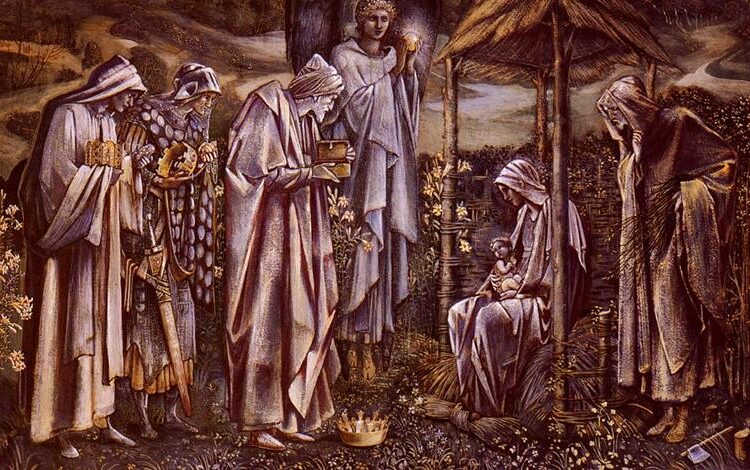
The Star of Bethlehem by Edward Burne-Jones, 1885
Beyond glass, Burne-Jones designed numerous decorative elements including ceramic tiles, tapestries, and mosaics. His designs for the “Holy Grail” tapestries showcase his talent for translating Arthurian mythology into visual narratives.
He also created jewelry designs and contributed to book illustrations with ornate borders and decorative elements. His work in these media demonstrates his belief that beauty should permeate everyday objects, not just fine art.
Paintings and Exhibition at the Grosvenor Gallery
Burne-Jones’s paintings represent his most recognized artistic contributions. His early works showed clear Pre-Raphaelite influences with their rich colors and detailed natural elements.
The Grosvenor Gallery exhibitions of 1877 and 1878 marked turning points in his career, establishing him as a leading British artist. Works like “The Beguiling of Merlin” and “The Mirror of Venus” showcased his mature style with dreamlike atmospheres and elongated figures.
His major paintings include “King Cophetua and the Beggar Maid,” “Love among the Ruins,” and “The Golden Stairs.” These works feature his signature mythological and literary themes explored through a distinctive visual language.
“The Last Sleep of Arthur in Avalon,” his unfinished masterpiece, exemplifies his lifelong fascination with Arthurian legend and his technical mastery of composition.
Illustrations and Designs
As an illustrator, Burne-Jones created memorable visual interpretations of literary works. His illustrations for William Morris’s “Kelmscott Chaucer” are considered masterpieces of book design, combining medieval-inspired decoration with refined draftsmanship.
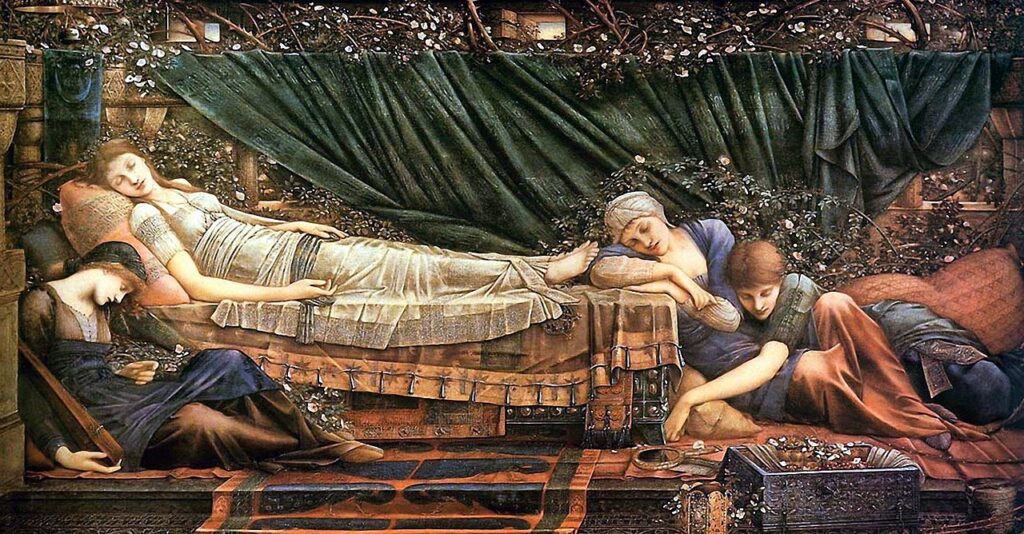
The Rose Bower by Edward Burne-Jones, 1890
His illustrations for “The Flower Book” demonstrate his ability to transform abstract concepts into symbolic visual narratives. Each image represents a flower name through an allegorical scene rather than depicting the actual plant.
Burne-Jones also produced designs for theatrical productions and musical performances. His costume and set designs brought his distinctive visual sensibility to the performing arts.
His illustrations frequently featured figures from classical mythology, medieval romances, and biblical stories – including Cupid, Music, and Hero – rendered with his characteristic dreamy quality.
Influence on Modernist Art
Burne-Jones’s influence extended well beyond Victorian art. His emphasis on pattern, decorative elements, and two-dimensional compositions anticipated key aspects of Art Nouveau and Symbolist movements.
Pablo Picasso and the Surrealists acknowledged his influence, particularly his dream-like compositions and flattened picture planes. His willingness to prioritize emotional resonance over strict naturalism opened doors for later artists to explore more subjective approaches.
The Aesthetic Movement’s principles of “art for art’s sake” found perfect expression in his work, which privileged beauty and emotional impact over narrative clarity or moral lessons.
His integration of fine and decorative arts helped break down hierarchical distinctions between artistic disciplines, contributing to modernist approaches to design and visual culture.
Cultural and Historical Impact
Edward Burne-Jones left a profound mark on Victorian art and beyond. His distinctive style influenced decorative arts, challenged artistic conventions, and helped shape aesthetic movements that would echo into the 20th century.
Involvement in the Arts and Crafts Movement
Burne-Jones formed a crucial partnership with William Morris in the Arts and Crafts Movement. Together they founded Morris, Marshall, Faulkner & Co. in 1861, which later became Morris & Co. This company revolutionized Victorian decorative design.
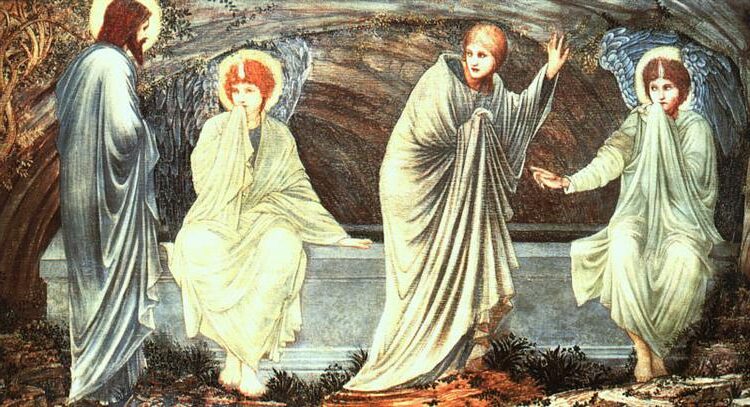
The Morning of the Resurrection, Edward Burne-Jones, 1882
Burne-Jones designed stained glass windows, tapestries, and book illustrations that exemplified the movement’s principles of craftsmanship and beauty in everyday objects. His medieval-inspired aesthetic perfectly complemented the movement’s rejection of industrial mass production.
His detailed designs for church windows throughout Britain demonstrated how fine art could be applied to functional objects. The collaboration between Burne-Jones and Morris established a new standard for integrating artistry into domestic and religious spaces.
Relationships and Muse Influence
Burne-Jones’s artistic output was significantly shaped by his personal relationships. His complex relationship with Maria Zambaco, a Greek model and sculptor, inspired some of his most emotionally charged works.
The passionate affair with Zambaco influenced his depictions of women, often portraying them as otherworldly and melancholic. This relationship, though tumultuous, contributed to the emotional depth found in his paintings.
His Pre-Raphaelite connections, particularly with Dante Gabriel Rossetti, reinforced his artistic direction. These relationships fostered an environment where artistic ideas could be exchanged and refined, ultimately enhancing the distinctive quality of his work.
Recognition and Commemoration
Burne-Jones achieved significant recognition during his lifetime, including a baronetcy in 1894, which marked the establishment’s acceptance of his artistic contributions. His international reputation grew through exhibitions across Europe.
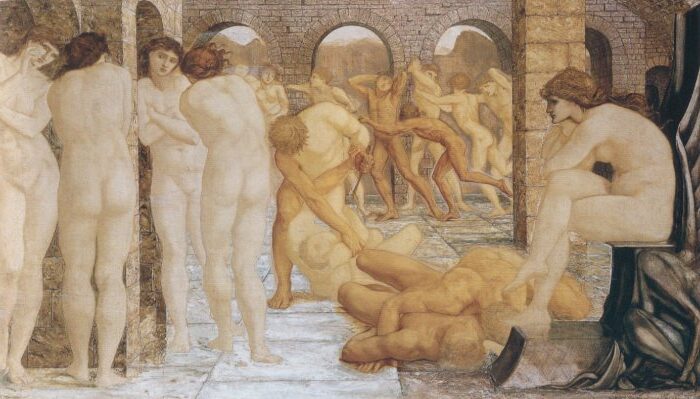
Venus Discordia by Edward Burne-Jones, 1872 – 1873
Today, major collections of his work are housed in museums worldwide, with Tate Britain in London holding significant examples. His hometown of Birmingham proudly claims him as a native son, with the Birmingham Museum and Art Gallery maintaining an extensive collection of his paintings.
A blue plaque marks his former home in London, acknowledging his historical importance. Libraries and art institutions regularly feature his illustrations and designs in exhibitions celebrating Victorian art and the Pre-Raphaelite movement.
Frequently Asked Questions
Edward Burne-Jones remains one of the most influential British artists of the Victorian era. His distinct artistic vision combined medieval romance, classical mythology, and dreamlike aesthetics that continue to captivate audiences today.
What are the key characteristics of Edward Burne-Jones’s artistic style?
Burne-Jones developed a distinctive artistic style marked by ethereal, melancholic figures with elongated proportions. His paintings feature rich, jewel-like colors and intricate patterns that create dreamlike atmospheres.
His work often displays meticulous attention to detail, particularly in drapery and ornamental elements. The artist frequently depicted androgynous figures with pale complexions and wistful expressions.
Burne-Jones rejected Victorian industrial modernism, instead creating timeless, otherworldly scenes. His work typically avoids direct narratives, focusing instead on mood and emotional resonance.
Which are some of Edward Burne-Jones’s most significant works and why?
“The Beguiling of Merlin” (1874) stands as one of his masterpieces, showcasing his fascination with Arthurian legend. The painting’s hypnotic composition and psychological tension exemplify his mature style.
“The Golden Stairs” (1880) features a procession of nearly identical young women descending a spiral staircase, demonstrating his interest in musical rhythm and visual harmony.
His “Perseus” series (1875-1885) reveals his skill with mythological narratives. “The Briar Rose” series (1885-1890) based on Sleeping Beauty displays his talent for creating interconnected narrative works.
How did the Pre-Raphaelite movement influence Edward Burne-Jones’s paintings?
Born in 1833, Burne-Jones became associated with the second phase of Pre-Raphaelitism. He embraced their rejection of academic conventions and return to the detailed, colorful approach of early Renaissance art.
From the Pre-Raphaelites, he adopted the use of literary and mythological subjects. However, unlike the first generation who emphasized naturalism, Burne-Jones developed a more decorative and dreamlike aesthetic.
His friendship with Dante Gabriel Rossetti proved particularly influential, inspiring his use of symbolic imagery and romantic themes. This connection helped shape his artistic development throughout his career.
Can you detail Edward Burne-Jones’s collaboration with William Morris and their impact on decorative arts?
Burne-Jones formed a lifelong friendship and creative partnership with William Morris beginning in their Oxford days. Together they founded Morris, Marshall, Faulkner & Co. in 1861, later reorganized as Morris & Co.
For this pioneering design firm, Burne-Jones created designs for stained glass windows, tapestries, tiles, and book illustrations. His work for Kelmscott Press, including illustrations for “The Works of Geoffrey Chaucer,” revolutionized book design.
Their collaboration embodied the Arts and Crafts movement’s ideals of craftsmanship and beauty in everyday objects. This partnership helped elevate decorative arts to the status of fine art in Victorian England.
How did Edward Burne-Jones’s work contribute to the Aesthetic Movement in the late 19th century?
Burne-Jones became a central figure in the Aesthetic Movement with its principle of “art for art’s sake.” His focus on beauty rather than moral messages aligned perfectly with Aesthetic ideals.
His work influenced the movement’s preference for dreamlike imagery, decorative patterns, and medieval revival styles. The melancholic mood and refined sensibility of his paintings embodied Aesthetic values.
By the 1880s, Burne-Jones had achieved international recognition, spreading Aesthetic principles throughout Europe. His emphasis on visual harmony and emotional response over narrative content shaped the movement’s direction.
What was the role of mythology and medieval themes in Edward Burne-Jones’s artwork?
Mythology provided Burne-Jones with a rich source of symbolic imagery and narrative complexity. Greek myths like Perseus and Andromeda allowed him to explore themes of heroism and sacrifice.
Medieval legends, particularly Arthurian tales, appeared frequently in his work. These stories offered him opportunities to depict chivalry, romance, and spiritual quests in visually compelling ways.
Burne-Jones used these ancient stories to create timeless, dreamlike scenes. His treatment of mythology emphasized psychological and emotional aspects rather than literal interpretations.

